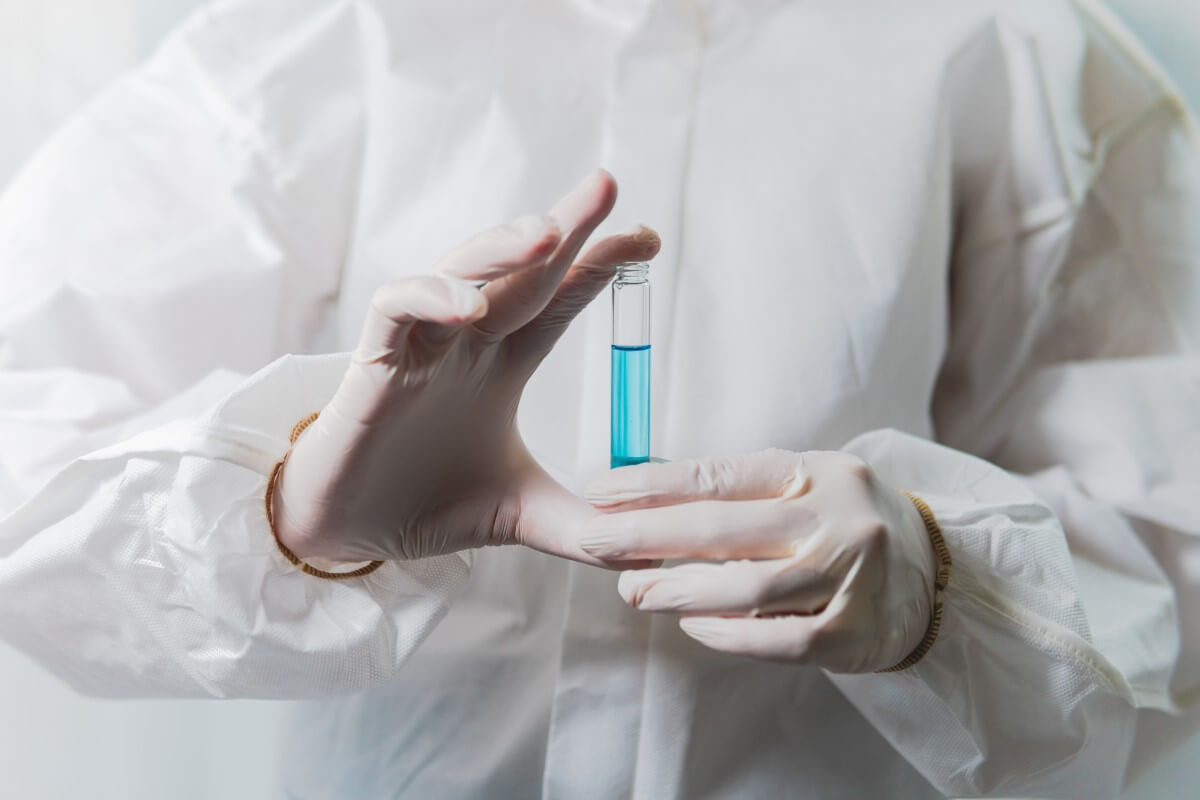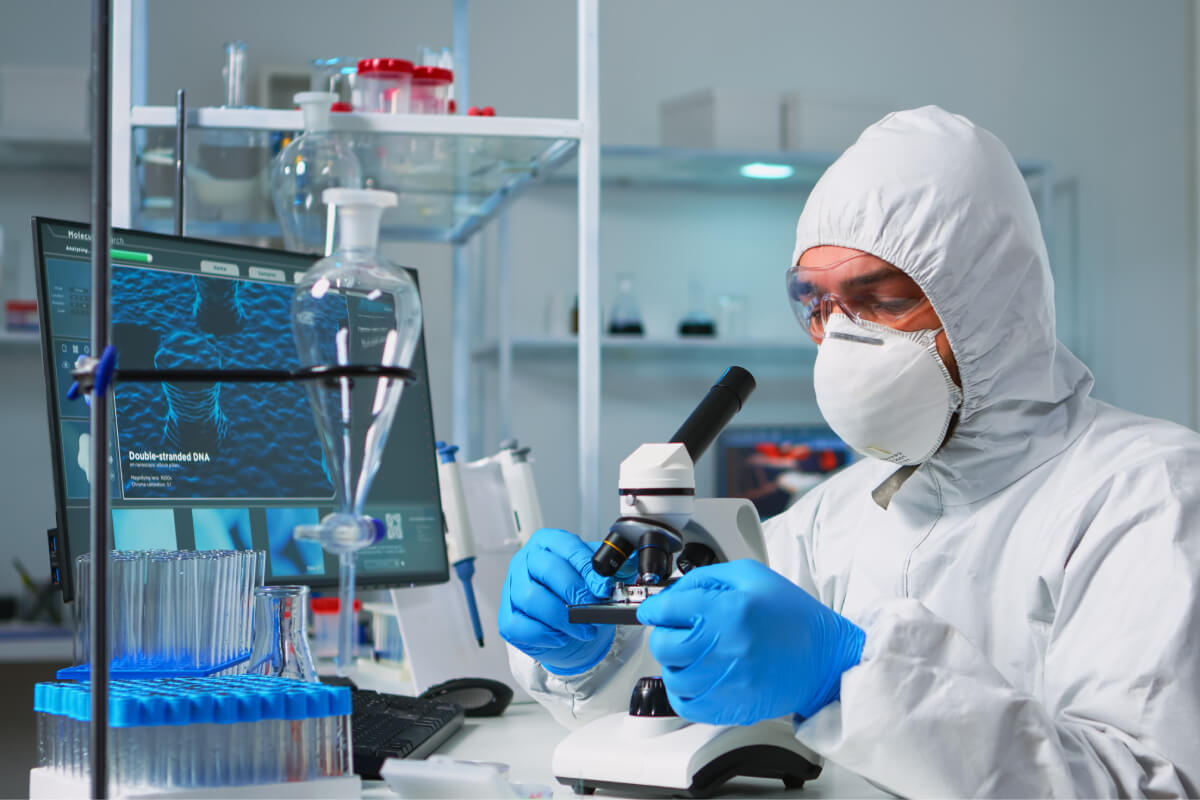What Can Whole Genome Sequencing (WGS) Detect
What Can Whole Genome Sequencing (WGS) Detect
Whole-genome sequencing (WGS) is a genomics process that determines the sequence in which all the base pairs in your DNA are arranged. A small sample of blood, saliva, or tissue is required to perform WGS. As the human genome contains approximately 3 billion base pairs of DNA, your DNA sample needs to be broken down into smaller fragments, which are analysed by a special machine called a sequencer upon the analysis
Once your DNA has been sequenced, the resulting sequencing data is analysed using bioinformatics technology. Annotations are made in order to identify each gene and any possible genetic variations, and the sequence data is compared to different genetic databases.
These methodologies allow for the identification of structural variants such as SNPs, single nucleotide variants (SNVs), point mutations, and mitochondrial heteroplasmy, among other variations. Analysing a genetic dataset to understand the structure of the DNA can be used to predict how genes and proteins will behave in an organism; this information can then be used to determine the genetic cause of many illnesses and also to find genealogic similarities to specific population groups.
Introduction on Genetic Disease
Whole-genome sequencing (WGS) has many uses in different fields, ranging from personalised medicine to general wellness. The information in your genome can be used to identify if you carry genetic conditions or rare diseases.
Additionally, WGS can identify your susceptibility to multifactorial diseases that don’t have a clear-cut inheritance pattern. Common multifactorial diseases that affect a significant percentage of the world’s population, such as:
- Hypertension or high blood pressure
- Diabetes mellitus
- Coronary heart disease
- Chronic respiratory diseases
- Multiple sclerosis
- Asthma
- Obesity
- Alzheimer’s disease
- Parkinson’s disease
- Crohn’s disease
- Epilepsy
- Autism spectrum disorder (ASD)
- Autoimmune diseases
The Use of Whole Genome Sequencing (WGS)
Genetics can also play a role in the development of certain types of cancer. WGS can detect BRCA mutations to alert you of these risks. The BRCA1 and BRCA2 genes function as tumour suppressor genes. However, mutations in these genes can lead to a significant risk of developing breast cancer, ovarian cancer, colon cancer, prostate cancer, stomach cancer, pancreatic cancer, and a type of skin cancer called melanoma. You can learn more from your genetic testing report if you’re interested in knowing about your cancer risk.
WGS can also tell if drug response process in your body is dysregulated as a result of pathogenic variants — for example, your response to medications is mediated by drug response-related genes such as CYP2D6, which regulates part of the cytochrome p450 complex that helps metabolise medications. WGS can detect if there is any mutation in this CYP2D6 gene.
AS human immune function is also partly modulated by genetics through substances such as human leukocyte antigens (HLA) genes and the major histocompatibility complex (MHC), WGS can be used to identify abnormalities in these and many other systems in your body.
You can also use WGS to discover more about your genetic genealogy. To achieve this, your genetic data will be compared to databases from different ethnic populations to identify the presence of variants that are characteristic of each ethnicity. In fact, your DNA can even be matched to ancient DNA from archaeological sites.
WGS isn’t only applicable to human DNA. The DNA of different microorganisms can also be sequenced, such as viruses and bacteria — thus, WGS can even be used to better understand the spread of infectious diseases, their origin, and how to prevent them.
The Benefits of Whole Genome Sequencing
The following are the benefits of WGS:
- WGS detects genetic variants that increase your predisposition to preventable diseases. It will help you make better lifestyle choices in order to decrease your risk of actually developing these diseases. Other applications of genomics, such as personalised wellness and nutrigenomics, can be used to help you develop healthier habits that are specific to your health risks.
- Genomics and WGS have also revolutionised the care of genetic or Mendelian disorders. Just a few years ago, it was often challenging to achieve an accurate genetic diagnosis — especially for uncommon diseases that aren’t fully understood. Gene sequencing has made it possible for researchers to identify the exact somatic mutation that causes each type of genetic disorder, even in the case of rare diseases or orphan diseases that haven’t been properly studied yet.
- Thanks to pharmacogenomics, your physician will know exactly which medications work best for you, and you won’t have to risk adverse effects. Through precision medicine, you’ll also have to wait less time for an accurate diagnosis. For patients who have a disease that doctors cannot diagnose, WGS can guide clinicians to the correct treatment.
- WGS results can also be used to help you and your partner have a healthy baby. This can be particularly helpful for prospective parents who are dealing with fertility issues or who have family members with genetic disorders. WGS is already used in paediatrics to treat children with difficult-to-diagnose diseases.
- Personalised medicine and WGS will also play a significant role in the future of public health. Even as you read this, different countries — such as the UK, France, and Australia — are implementing strategies with the aim of providing free DNA sequencing through their healthcare systems.
Why Whole Genome Sequencing Is Better Than Other DNA Tests
These sequencing methods can detect many different ailments, but they can also miss vital genetic information. Tests that are more targeted can be very useful when you need to detect structural variations in a specific gene, but they can leave out many other variants.
Differences Between WGS and Tests from CircleDNA, 23andMe and Ancestry.com
While whole genome testing is able to map out your entire DNA — regardless of whether it’s coding or non-coding regions. Many commercial tests offered by popular companies like 23andMe and Ancestry.com, don’t provide the same depth of information.
CircleDNA uses Whole Exome Sequencing (WES), which reads the coding DNA of an invidiual. It doesn’t analyse your entire genome. It reads the exon – a genetic sequence codes for the production of many different proteins However, it does not read the non-coding DNA, which is recently reported to have important role in regulating DNA replication.
23andMe uses a technology known as DNA genotyping, which simply identifies the presence of specific genetic variants in your DNA. Similar like WES, it doesn’t analyse your entire genome. These variants of interest must be well studied and pinned down before the test is carried out.
Ancestry.com, on the other hand, uses autosomal DNA testing. This type of genetic testing analyses the majority of your chromosomes, but it only looks for specific SNPs, which only make up a small portion of all the genetic variants that may exist in your DNA.
Whole Genome Sequencing Methods
New techniques, commonly known as next-generation sequencing (NGS) or high-throughput sequencing technologies, reduced sequencing costs and accelerated genetic testing workflow. DNA sequencing techniques include large-scale, de novo, shotgun, and high-throughput sequencing. Several modern DNA sequencing methods are currently available or in development, including:
- Illumina dye sequencing
- Pyrosequencing
- Ion Torrent sequencing
- Single-molecule real-time (SMRT) sequencing
- Sequencing by ligation (SOLiD sequencing)
- Nanopore sequencing
Whole Genome Sequencing Analysis
These methodologies allow for the identification of structural variants such as SNPs, single nucleotide variants (SNVs), point mutations, and mitochondrial heteroplasmy, among other variations. Analysing a genetic dataset to understand the structure of the DNA can be used to predict how genes and proteins will behave in an organism; this information can then be used to determine the genetic cause of many illnesses and also to find genealogic similarities to specific population groups.
Just as different sequencers can be used for genetic testing, different methodologies can also be used to perform sequence analysis10. These methods include cDNA microarray, qPCR, Northern Blot, methylation-dependent restriction enzymes (MDRE), chromatin immunoprecipitation (ChIP), mass spectrometry (MS), two-dimensional gel electrophoresis (2-DE), among others. In some cases, several methodologies can be combined for a more comprehensive analysis.
Whole genome sequencing analysis shouldn’t be confused with DNA analysis or profiling, which is a simpler method meant to identify an individual without sequencing their DNA. DNA profiling is often used in forensics to determine the likelihood that someone committed a crime; it’s also used in parentage testing.
The Difference Between Testing, Analysis, and Reporting
Testing is the first step of the WGS process; the DNA in your sample will be broken down into smaller fragments and sequenced. Keep in mind that not all genetic testing is WGS — other types of genetic testing are available, but they won’t deliver the same amount of information. The analysis allows your DNA sequence to be compared to others to identify findings relevant to your ancestry and different aspects of your health. Genome analysis is also vital for creating extensive genetic databases that can be used to identify and study genetic mutations and diseases.
Reporting is the final step of the process, in which raw data is used to create a genetic report11 containing all the pertinent information that was found as part of your WGS. Reports can be tailored for patients or healthcare professionals, depending on the specific case and who will be reviewing the information.




